Currently on show at the RBSA Gallery is an exhibition by artist Gabrielle Roberts-Dalton titled Menopause: A Change In Life. Gabby, as the artist likes to be known, explores the emotional and physical challenges of the menopause through self-portraits in oil, Indian ink and prints. Her work will be on display until the 4th August 2018.
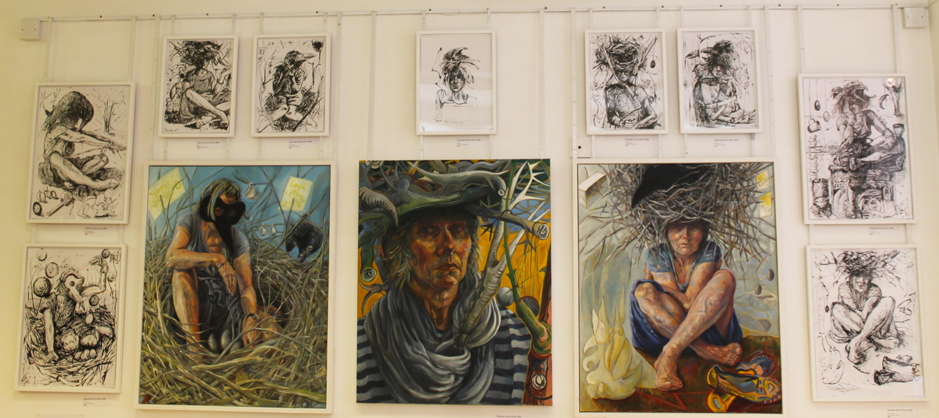
The Artist: Gabrielle Roberts-Dalton
Mainly focusing on portraiture, Gabby has had her works exhibited in the Herbert Art Gallery (Coventry), Royal Shakespeare Theatre (Stratford-Upon-Avon) and the RBSA. Gabby began her association with the RBSA after exhibiting for the Portrait Prize in 2012. She became an RBSA associate in 2016 and was voted a full member in 2017.
Artwork In Focus: Snug in Time
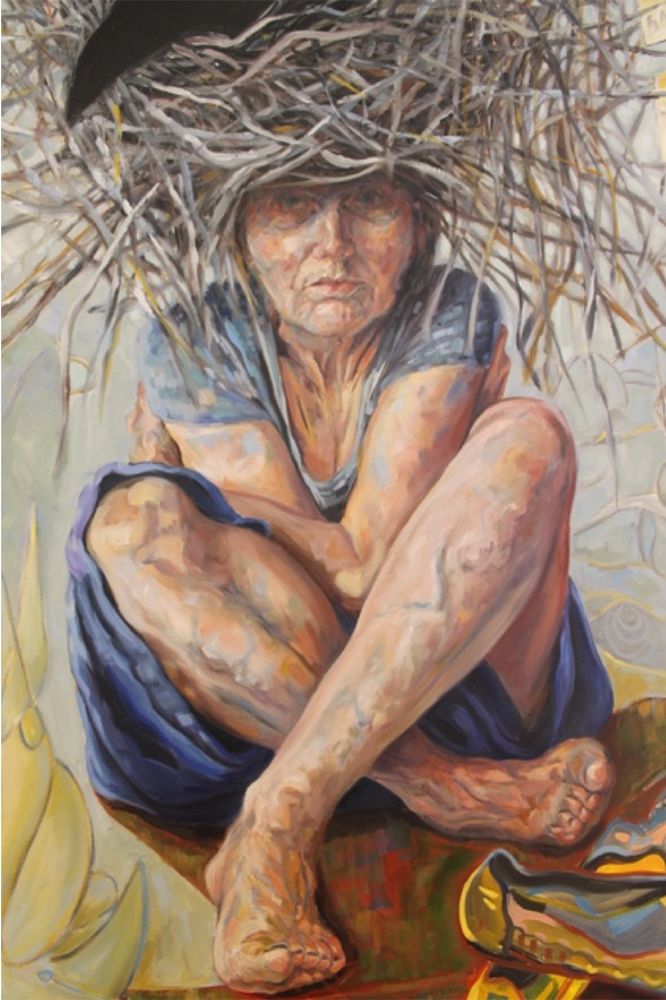
One of the artworks on display is Snug In Time. Created using oil paint, Gabby presents a middle-aged woman, protectively hugging herself. The figure is balancing a heavy nest with a crow on her top of her head, weighing her down. The artist has exaggerated the women’s appearance, with contemplative facial expression and pronounced bodily veins.
For each piece, Gabby has written accompanying literature outlining her thoughts. For this painting, the artist describes ‘being comfortable in one moment’ yet also ‘things are faded’ coming ‘in and out of vision’. Therefore, this detailed painting provides the viewer with a snapshot of the complex physical changes and emotional impact, that women experience when going through the menopause.
An Interview With The Artist: Gabrielle Roberts-Dalton RBSA
I was fortunate enough to be given the opportunity to interview Gabby during my visit to the RBSA. In this interview, the artist discusses the inspiration behind her exhibited works.
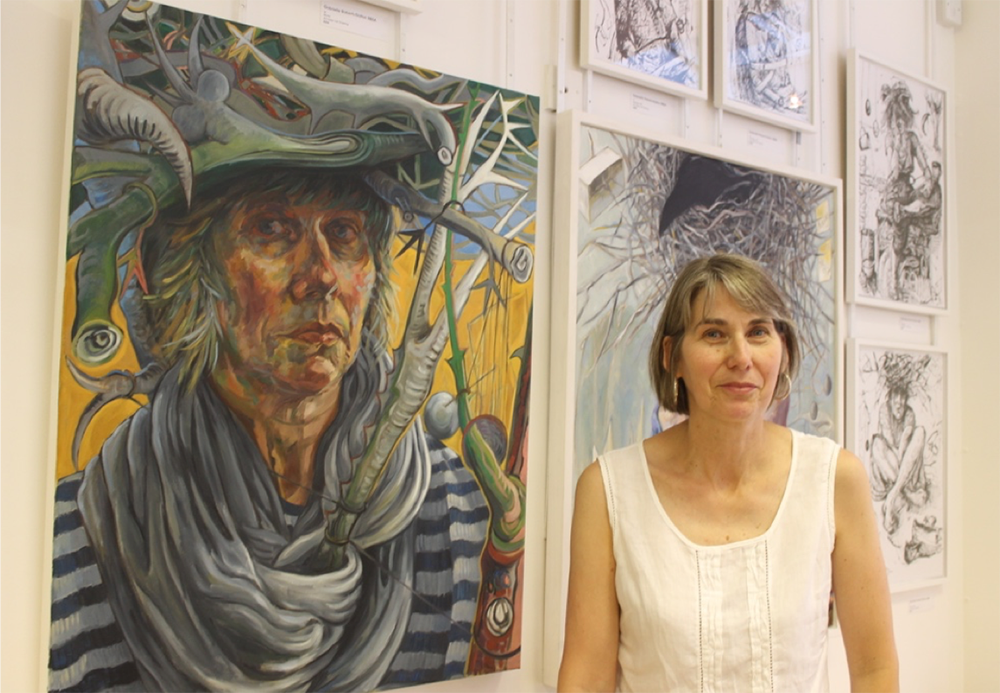
What was the starting point or trigger for you wanting to produce artworks on the menopause?
The trigger was my own personal experiences. Having to deal with the emotions and physical symptoms in uncertainty, as well as realising that you are part of the older generation once your parents have passed away, you are in a kind of no man’s land. I wanted to express this issue, which is often hidden away by those who go through it and something that many do not think about.
In this collection of artworks the image of a crow often re-occurs. Does the crow have a symbolic meaning for you?
A lot of people see the crow as an omen. I used it as a companion, voicing how I feel. Looking back at examples in Celtic art, the crow was seen as a positive symbol and I wanted to bring that through, with birds in particular sharing attributes like mothering their young. Yet, I also wanted that sense of ambiguity, death being like a ghost as you arrive at the point of being part of the older generation. I show this in my art, revealing an honest portrayal of these physical symptoms, highlighting ageing features such as veins in legs. Also, I use the crow alongside the nest, leaving behind one part of your life and going onto another stage.
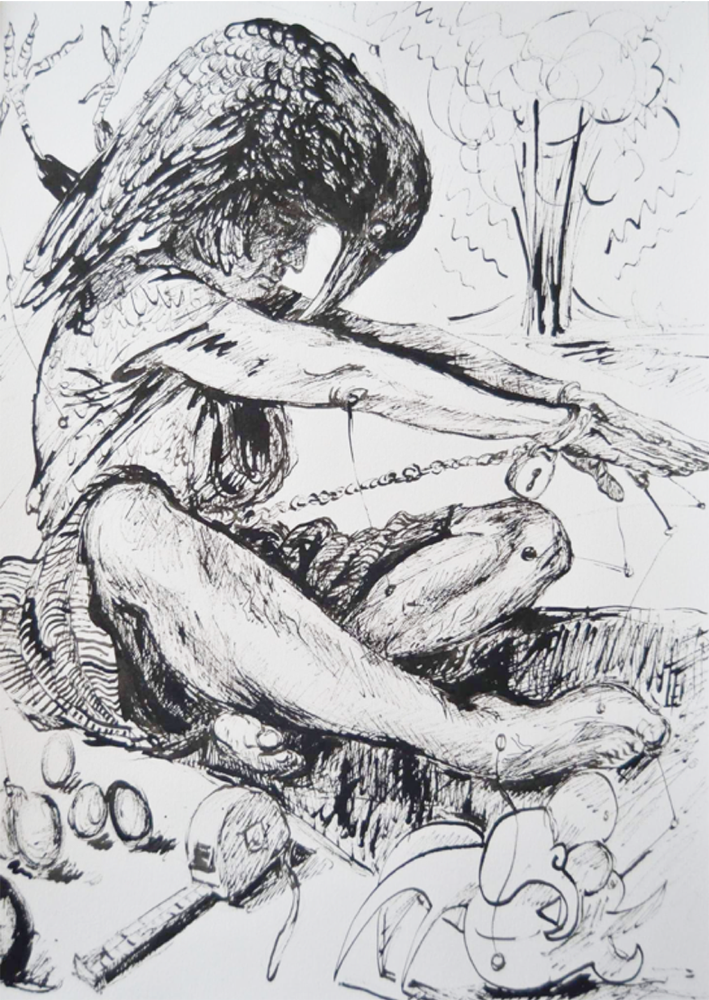
You use various domestic items in your artworks, such as pots, bowls and cups. Do these objects represent domesticity or do they hold other meanings?
I prefer to think of these items as symbols. You feel like you are a vessel, with objects such as the cup representing your womb, left hanging, eggs showing they are no longer needed and clothing discarded. It is more about the passing of time, which is why I have chosen items such as a birthday cake, to represent this.

Alongside oil, you have also employed Indian ink. Why did you choose to use this medium?
I think I have always used ink but started to use it more often, recently. I love the immediacy of it. When something is not quite right, I love that tension. I do not want perfection rather expression. Pain in the Neck is an example of this. Using pen or a chopstick to create the scratchy surface, the woman is in a very painful, rigid position with a scarf keeping her neck warm, yet also constricting her. I have built up the shadow and shading to leave this sense of ambiguity both around her neck and with the mask, that conceals her face.
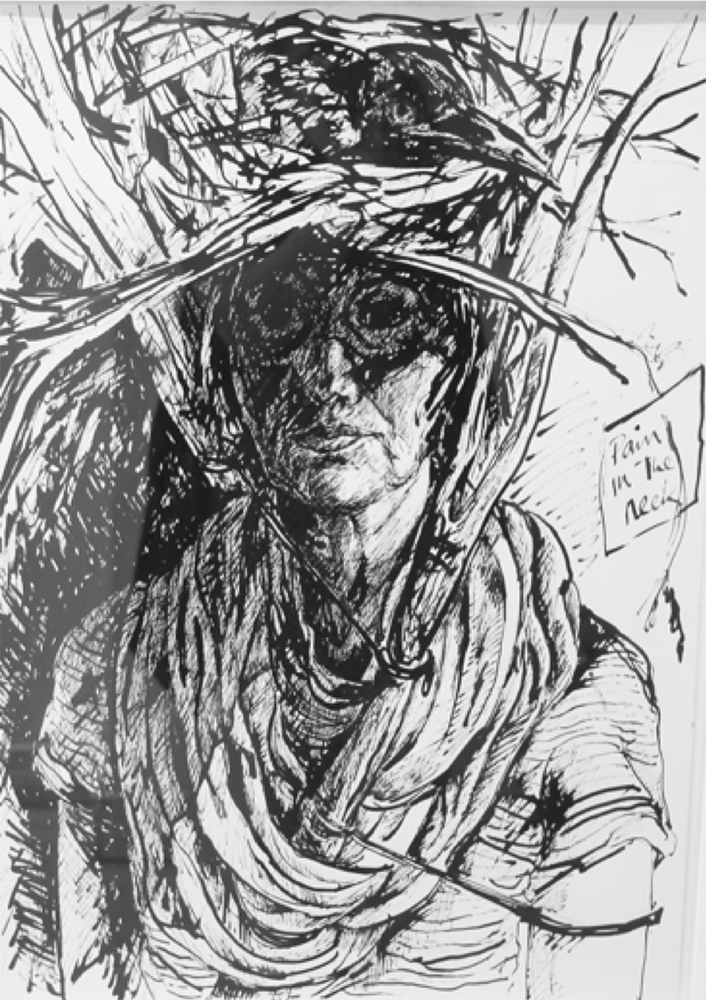
Most of the women in your portraits have their faces either fully or partially obscured. What does this represent?
I wanted it to emulate a mask in some way. This is especially so for Fuzzy Head. I wanted to really display the feeling of not being able to concentrate, being obscured and losing the lack of clarity, that you thought you had. Also, The Observer shows a different kind of mask. The woman is wearing a literal mask and when she looks into the mirror, shown to the right, she has become the crow. She is an observer, almost like a spy, still being here but not quite.
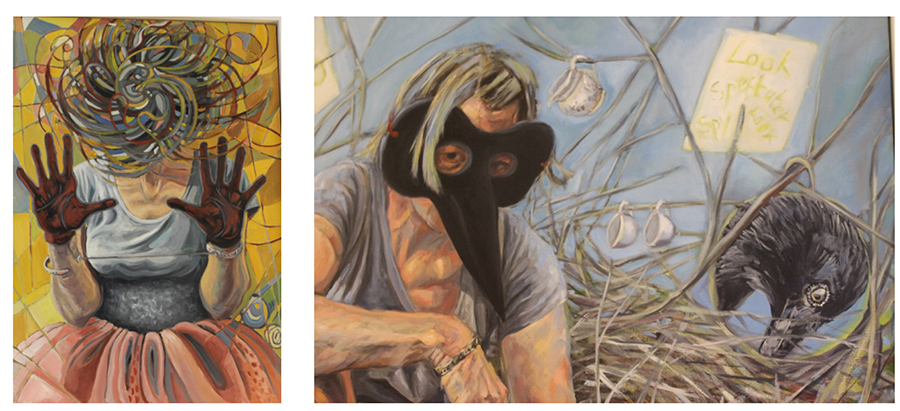
Do you have any further plans for this collection or upcoming exhibitions?
I currently have five further works not on display that are part of this collection, one of which I am still working on. I would love all of the collection to be displayed as one. Also, I am really interested in the impact that my art is having on those who view it, especially when tackling a topic, such as the menopause.
Finally, do you have any further comments about your exhibition at the RBSA?
I am really pleased with the positive response that visitors have had. It feels really good to have the opportunity to show and express your ideas on a topic that people do not talk about. I want to demonstrate that the body is so sensitive to hormonal and chemical change. It is often ignored and women have to just get on with it. Therefore, I do not think society is sympathetic to the menopause. I have also found that many viewers who have not experienced the menopause, have identified with the physical and emotion symptoms displayed for different reasons.
Gabrielle Roberts-Dalton’s Menopause: A Change In Life will be on display until 4th August 2018.
Admission is free.
Time for one more read?
If you enjoyed today’s post, you will enjoy our recent post on the upcoming ‘Reframing the Wild’ Exhibition at the Wolverhampton Art Gallery.

1 thought on “On Display At The RBSA: Gabrielle Roberts-Dalton”